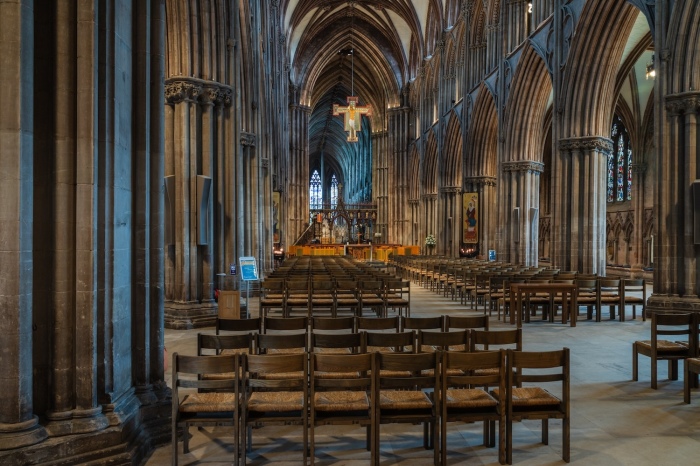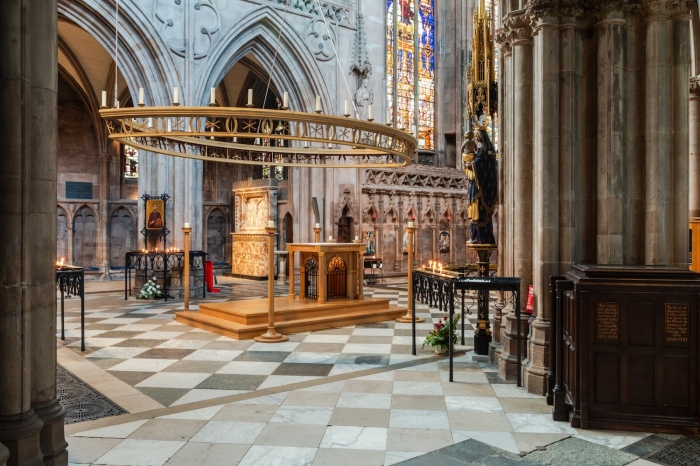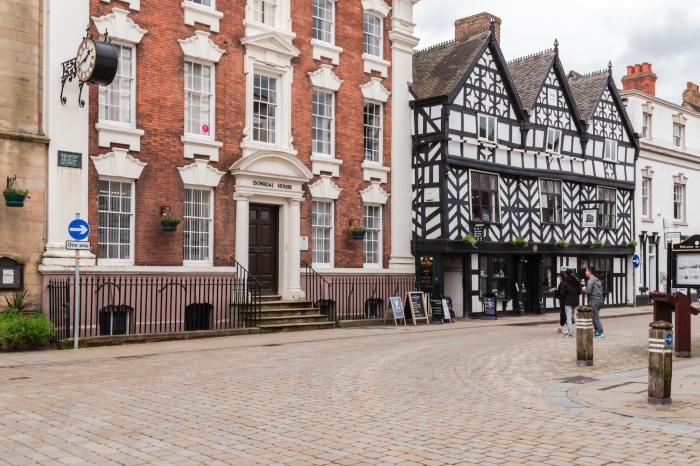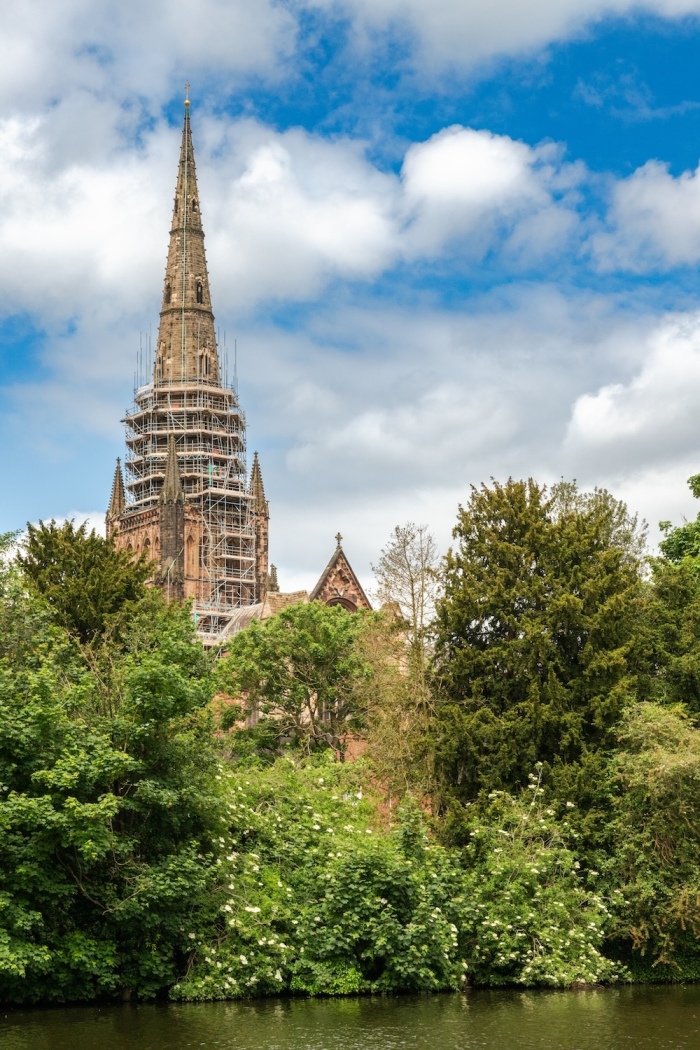Travel: Postcard from Lichfield, England

Medieval cathedral. Check. A quaint small city. Check. Lots of religious history. Check.
Checking all the boxes is Lichfield, an underrated city of 32,000 souls in the equally underrated county of Staffordshire. As I discovered during a visit last month, this is where you go for a long weekend after you’ve done the well-trodden tourist trail elsewhere in England.
My visit started after flying into London’s Heathrow and picking up a rental car. About two hours later I was at the parking lot of Lichfield’s George Inn.
A short walk away is the Cathedral Church of the Virgin Mary and St. Chad, also called Lichfield Cathedral.
Known for being Britain’s only medieval cathedral with three spires, it dominates the cityscape. The red sandstone cathedral is Gothic and dates to the 13th century, though the literal and figurative foundation is much older. A clue is its partial dedication to Chad. A monk, abbot and bishop in the seventh century, he was hugely influential in the Christianization of England. He’s also among the lesser-known English saints.
Subsequent bishops — pre-Schism of 1054, Roman Catholic and post-Reformation Anglican — have made Lichfield their See through virtually uninterrupted succession for more than 1,350 years. Since King Henry VIII’s break with Rome, the cathedral has been Anglican (Church of England). And while badly damaged during the English Civil War in the 17th century, later restorations, including a recently completed restoration of the 252-foot-tall central spire, have contributed to what you see today.
Inside, are two treasures. The first is the shrine of St. Chad, which is modern as the original medieval shrine was destroyed at the Reformation. It was reestablished two years ago after a small relic was graciously translated from a Roman Catholic cathedral. The second is the St. Chad Gospels, a mid-eighth century book of inscribed vellum containing the Gospels of Matthew and Mark and part of Luke.

Beyond the postcard-perfect cathedral precincts is Market Square.
Located at the heart of Lichfield and within the shadows of a former church that today serves as a community center, a thrice-weekly market takes place here. In centuries past, the square wouldn’t have been as pleasant since this was also where the king (or queen)’s justice by way of a gruesome public execution was carried out.
Three Protestants were martyred as part of the persecutions under Queen Mary (hence her nickname of Bloody Mary). Later in 1612, Edward Wightman, an Anabaptist who is said to have denied the trinity among other doctrines, became the last person burned at the stake for heresy in England.

Opposite is what at least on first glance appears to be just another old house. In reality, it’s the Samuel Johnson Birthplace Museum, which tells the story of the great man of letters who in 1755 published the first English language dictionary.
An easy day trip is Mow Cop, about an hour away.
Located in the north of Staffordshire about 6 miles from Stoke-on-Trent, a city steeped in the Industrial Revolution and home to Wedgwood of pottery fame, Mow Cop is a 1,099-foot hill with fake castle ruins. It’s also where a revival in 1807 gave birth to the Primitive Methodist denomination.
Primitive Methodism emerged as a movement among workers at the potteries and other factories. At its peak, a couple hundred thousand adherents promoted what they believed was a return to John Wesley’s Methodism. They focused on open-air preaching, revivals, camp meetings and lay ministry at a time of democratic reforms.
While just outside the county of Staffordshire, the Anglesea Brook Chapel and Museum is worth a visit. Housed within one of the first purpose-built Primitive Methodist chapels, the small museum is surely the only place to learn about a denomination that ceased to exist with the reunification of British Methodists in 1932.
If you go
There is no charge to visit Lichfield Cathedral. However, special tours, including the tower and rooftop towers that relaunch later this month, do require a ticket purchase.

Today part of Best Western, The George has its roots in an 18th century coaching inn. A modern alternative is the Premier Inn City Centre. The British chain is basically the equivalent to a Hampton Inn or Fairfield back home. If you wanted to spend a night near Stoke-on-Trent, the Courtyard Keele Staffordshire is the best option.
For restaurants, eat at The Quill & Scholar, Upstairs by Tom Shepherd and The Tudor, which is housed in a black-and-white, timber-framed building from the time of Henry VIII.
The closest airport with nonstop flights to and from U.S. airports is actually Manchester (75 miles away). While I found airfares the same as London Heathrow, it’s worth comparing prices. Especially rental cars, as those seemed to fluctuate the most.
Getting around Staffordshire requires a rental car, though hiking or biking the Two Saints Way is an option. The pilgrimage trail runs 92 miles between Lichfield and Chester, whose patron saint is the seventh century Anglo-Saxon princess-turned-nun St. Werburgh. For those not wanting to do the full pilgrimage, the stage from Lichfield to Cannock Wood, a small village, is just six miles each way.
Dennis Lennox writes a travel column for The Christian Post
Dennis Lennox writes about travel, politics and religious affairs. He has been published in the Financial Times, Independent, The Detroit News, Toronto Sun and other publications. Follow @dennislennox on Twitter.





























